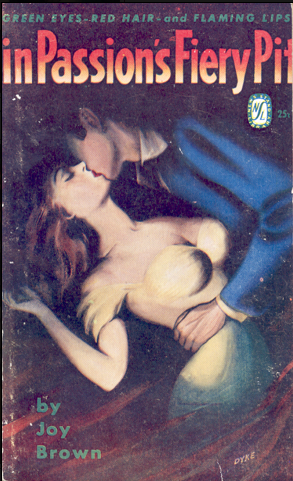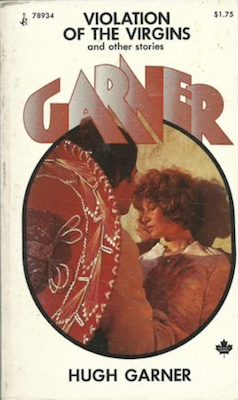High Tide is a Midnight
Ronald Cocking
London: Hurst & Blackett, [1950]
If the past is a foreign country, that of a foreign country will seem particularly alien. Still, I wonder if there was ever an England like the one depicted in High Tide is at Midnight. Was there really a time in which unlisted phone numbers were available to anyone who asked? Was there really a time when a simple call to a beautiful young film star would bring an immediate invitation to tea? Really? At the actress's London flat? Even when you refused to say why you were calling?
These are the sorts of questions that played through my mind when, I suppose, the author would've had me thinking about smuggling, rationing, and the high rate of purchase tax. His hero, Kevin Marlow of the Customs and Excise Department's Special Investigation Branch, is perhaps the dullest to ever feature in a thriller. "You know, Mr. Marlow," says his superior, Sir William Lindlay, "I think you are the most patient officer in the Branch. Not the most brilliant, perhaps, but certainly the most patient; and patience often achieves results denied to the purely clever people."
Clever colleague Craddock having failed, Kevin is assigned to take over an investigation into a smuggling ring thought to be working the English Channel. That evening, whilst going through Craddock's notes in his bachelor flat, he finds the calling card of new screen sensation Margaret Lawson. It's an "odd coincidence", Kevin having taken in her latest film, Strange Tomorrow, just hours earlier.
The very next morning, Craddock collapses, whispering these words to Kevin with his dying breath: "Kennington… Near Kennington. And… the… sea… port. They're… all… in… it."
Kevin doesn't bother following up on Craddock's parting tip. Never does. He begins his investigation by getting Margaret Lawson's phone number, giving her a call, sipping her tea, and coming away wholly unsatisfied:
Kevin decided that he didn't understand at all; nothing fitted. For one thing, he ought to be feeling a considerable resentment towards her because of the fact that she was deliberately obstructing him – yet all he could feel was admiration for her loyalty. Yet she had lied about Craddock, and if his vague suspicions about Craddock were right, that tied her up directly with what was going on – which was a vastly different thing to her being an unwilling party. He was thinking in circles, he suddenly realized – and gave it up. He must get a lot more facts first.Kevin's method is to visit and revisit his suspects with faith that it will all lead to something. I was reminded more of a Jehovah's Witness than a detective. High Tide is at Midnight is a novella made novel through excessive detail, most of which involves getting the protagonist from visit A to visit B:
At eight o'clock the next morning – a Saturday – Kevin was bowling along over Catford Heath, headed south-east. It was more like April than October – the sky was blue, and there was a golden haze in the crisp air. By eight-twenty-five he was in Farmingham, and he pulled up briefly at a café to drink some steaming hot coffee and eat some buttered toast.Although Kevin is helped along by the odd "odd coincidence" and has the good fortune to stumble, both literarily and figuratively, upon a good many clues, he proves himself incapable of exposing the smugglers. One of his greatest breaks occurs when, quite by chance, he stops in a village in which every single inhabitant is involved with the ring (vicar included). Even this leads to nothing. Shame Craddock is dead; bet he could've figured things out.
Then he went on down the arterial road until he came to the Sevenoaks-Maidstone Road, where he turned left. In Maidstone he stopped to consult his road-map, then pressed on down the Hastings Road for a mile, turned off south-east again on the Class 2 road, finally coming out in Tenterden. There he asked the way from a passing farmhand, and some five minutes later he coasted down into a hollow, and tucked under the hill on the left, close to a brook, there it was – a cottage with a small board attached to a gate on which was written 'THE DELL'.
Ultimately, it's Margaret Lawson who blows the lid off the smuggling operation, telling our hero everything. In doing so, she exposes family's participation, thereby risking gaol time for herself, her brother and her parents.
Why would she do such a thing?
Well, you see, the beautiful film star had fallen in love with the Customs and Excise man.
Was there ever really such an England?
The romantic Kevin Marlow:
"You know," he said, "I little thought when I was sitting in the cinema watching your last film a few days ago that I would be soon having you all to myself in a country cottage. I admire your acting enormously."
She said: "Thank you, sir. But seriously – I'm glad. Oddly enough, I want you to… have a good opinion of me."
"Why?"
She shrugged her slim shoulders.
I don't really know – after all, we're practically strangers. But I suppose that it's because intuitively I respect your judgement. Does that sound ridiculous?"
"No," Kevin said, smiling. "And it does my ego a lot of good." He looked over the rim of his cup. "While the Mutual admiration Society is in session, I should like to mention something else. I think that you're the most beautiful woman I have ever seen – and I mean that very sincerely. I hope you don't mind my saying that; anyway, it's said."
Object: A compact 222-page hardcover in black boards. I purchased my copy last year – avec Crime-Book Society belly band – for £26 from a bookseller in North Lincolnshire. The back cover features a pitch for the publisher's "New and Forthcoming Thrillers", including: The Man I Didn't Kill by Norman Deane (pseud. John Creasey), Fog is a Shroud by McKnight Malmar, and The Lady in the Wood by John Dellbridge. The one I'm most interested in is the ultra-uncommon Under the Quiet Water by Canadian Frances Shelley Wees.
Access: Not found in a single library on this side of the Atlantic. Cousins overseas will find it only at the British Library, Oxford University and Trinity College, Dublin.
No copies are listed for sale online.
Related posts:













































